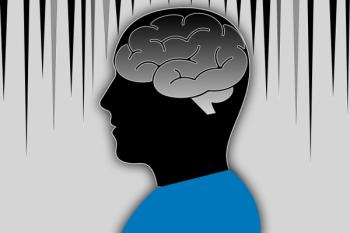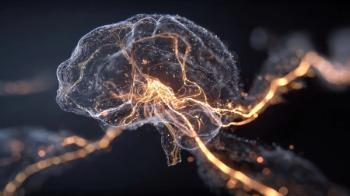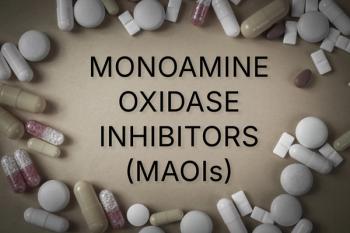
- Vol 38, Issue 3
- Volume 03
Psilocybin Revisited: The Science Behind the Drug and Its Surprising Therapeutic Potential
Psilocybin may be useful for examining interactions between serotonin-dopamine systems and various psychiatric conditions, such as schizophrenia.
CATEGORY 1 CME
Premiere Date: March 20, 2021
Expiration Date: September 20, 2022
This activity offers CE credits for:
1. Physicians (CME)
2. Other
All other clinicians either will receive a CME Attendance Certificate or may choose any of the types of CE credit being offered.
ACTIVITY GOAL
The goal of this activity is to inform readers about the latest research and clinical trials on psilocybin and outline its possible clinical uses.
Learning Objectives:
1. Describe the active ingredient of psilocybin.
2. Discuss the pharmacology and pharmacokinetic profile of psilocybin.
3. Recognize the potential clinical applications of psilocybin for treatment-resistant depression and other psychiatric conditions.
4. Identify the psychedelic-assisted psychotherapy method for psilocybin treatment.
TARGET AUDIENCE
This continuing medical education (CME) activity is intended for psychiatrists, psychologists, primary care physicians, physician assistants, nurse practitioners, and other health care professionals who seek to improve their care for patients with mental health disorders.
ACCREDITATION/CREDIT DESIGNATION/FINANCIAL SUPPORT
This activity has been planned and implemented in accordance with the accreditation requirements and policies of the Accreditation Council for Continuing Medical Education (ACCME) through the joint providership of Physicians’ Education Resource®, LLC and Psychiatric Times™. Physicians’ Education Resource®, LLC is accredited by the ACCME to provide continuing medical education for physicians.
Physicians’ Education Resource®, LLC designates this enduring material for a maximum of 1.5 AMA PRA Category 1 Credits™. Physicians should claim only the credit commensurate with the extent of their participation in the activity.
This activity is funded entirely by Physicians’ Education Resource®, LLC. No commercial support was received.
OFF-LABEL DISCLOSURE/DISCLAIMER
This CME activity may or may not discuss investigational, unapproved, or off-label use of drugs. Participants are advised to consult prescribing information for any products discussed. The information provided in this CME activity is for continuing medical education purposes only and is not meant to substitute for the independent clinical judgment of a physician relative to diagnostic or treatment options for a specific patient’s medical condition.
The opinions expressed in the content are solely those of the individual faculty members and do not reflect those of Physicians’ Education Resource®, LLC.
FACULTY, STAFF, AND PLANNERS’ DISCLOSURES
The author, peer reviewers, and staff members of Physicians’ Education Resource®, LLC and Psychiatric Times™ have no relevant financial relationships with commercial interests.
For content-related questions, email us at
HOW TO CLAIM CREDIT
Once you have read the article, please use the following URL to evaluate and request credit:
The pharmaceutical company Sandoz ceased LSD and psilocybin manufacturing in 1965, and in 1970, the Controlled Substances Act placed psilocybin, LSD, and other psychedelic drugs under the Schedule I designation.1,2 This action resulted in a cessation of research associated with these agents. The revival of research into psilocybin and LSD began 25 years later under strict restrictions, when preliminary findings displayed promising results for a variety of psychiatric disorders. In the past several years, there have been more research studies on psychedelics than at any previous time.
The FDA approved the psychedelic agent, esketamine nasal spray for treatment-resistant depression (TRD) in 2019; this opened the door to the novel therapeutic approaches of psychedelic agents. In 2018, the FDA designated psilocybin for TRD and 3,4-methylenedioxymethamphetamine (MDMA)-assisted psychotherapy for
Psilocybin reportedly has a low abuse potential and yields no physical dependence, based on the 8 factors of the Controlled Substances Act. It was recommended to be rescheduled as a Controlled Substance Schedule IV drug with a
Pharmacology
The structures of psilocybin (O-phosphoryl-4-hydroxy-N,N-dimethyltryptamine) and its active metabolite psilocin (4-hydroxy-N,N-dimethyltryptamine) are shown in the
Preclinical studies have shown that 5-HT2A receptor activation in the cortical and subcortical structures is the unifying mechanism by which psychedelics exert their hallucinogenic and other assorted psychological actions.7 Depending upon the dose used, the specific psychedelic agent, and possibly, the 5-HT2A receptor density in the different neuronal areas, psilocybin and other psychedelic agents can exert different modulatory actions across the various cortical regions. The administration of ketanserin (a 5-HT2A receptor antagonist) in human clinical studies attenuated the psychological effects of psilocybin, psilocin, and LSD.7 The role of 5-HT1A receptors in human psilocybin studies remain to be elucidated.
Besides 5-HT receptors, psychedelic agents may possess other pharmacologic actions that contribute to their behavioral and psychological effects. LSD was reported to interact with considerable affinity at the
The activation of 5-HT2A
Pharmacokinetics
Psilocybin is rapidly converted to the active molecule, psilocin. Specific bioanalytical assay methods have been developed to quantify psilocin, to determine its pharmacokinetic (PK) profile. An early study with psilocybin was conducted in healthy volunteers (N = 7), in which each participant received an intravenous (IV) dose of 1 mg and an oral dose of 0.224 mg/kg (range 10 to 20 mg).11 The estimated mean oral bioavailability of psilocin was 52.7% ± 20%. The following mean PK parameters reported from the oral route were the time to maximum effect/concentration (Tmax) of 105 ± 37 min; peak plasma concentration (Cmax) of 8.2 ± 2.8 ng/mL; and elimination half-life (T1/2β) of 163.3 ± 63.5 min. An almost immediate phosphorylation of psilocybin takes place, and results from the IV administration noted a mean psilocin Tmax of 1.9 ± 1.0 min; Cmax of 12.9 ± 5.6 ng/mL; and T1/2β of 74.1 ± 19.6 min. The psychological effects reportedly began at 20 to 90 min, and within 2 min from the oral and intravenous routes, respectively.
The major
In a population PK study, healthy volunteers (N = 12) were given escalating single oral doses of psilocybin at 0.3, 0.45, and 0.6 mg/kg, with a minimum of a 4-week interval between dosage administrations.13 The final model developed from the PK analysis was a single compartment model with linear absorption and clearance. The median area under the concentration-time curve (AUC) for psilocin was linear at 140 mg-hr/L, 213 mg-hr/L, and 267 mg-hr/L, corresponding to the doses of 0.3 mg/kg, 0.45 mg/kg, and 0.6 mg/kg, respectively.
Once psilocin is formed, it is mainly metabolized to psilocin-G (90%), and a small portion is converted to psilocin (10%). This can partially explain the interpatient variability observed with psilocybin administration. The
58% of the creatinine clearance.13 These findings suggest that psilocybin dosage reductions are not necessary in patients with mild to moderate renal impairment.
The metabolic profile of psilocybin is presented in the
In the second minor pathway, psilocin can be metabolized to 4-hydroxy-indole-3-acetaldehyde by 2 enzymes: aldehyde dehydrogenase (ALDH) and monoamine oxidase (MAO). It should be noted that alcohol and MAO inhibitors such as phenelzine may suggest interesting questions regarding potential drug-drug interactions that can lead to pharmacokinetic and/or pharmacodynamic effects. The metabolite, 4-hydroxy-indole-3-acetaldehyde is then further converted to 4-hydroxyindole-3-acetic acid and 4-hydroxytryptophole.14
The third minor metabolic pathway for psilocin takes place via the cytochrome oxidase enzymes (it is unknown whether this is related to the cytochrome P450 oxidase enzymes) and non-enzymatic Fe3+ to form psilocin iminoquinone.6
Clinical Drug Development
Earlier PK studies established the initial parameters for psilocybin dosing and provided information on the onset of its psychological effects for drug and product development. The next steps are to correlate the psilocybin (psilocin) clinical PK effects with its pharmacodynamics.
A phase 1 clinical trial with the psilocybin formulation COMP360 was conducted in healthy volunteers (N = 89), in which participants randomly received a single 10 mg or 25 mg dose of psilocybin or placebo.16 The study aimed to evaluate the emotional and cognitive responses of participants, along with the safety and tolerability under strict procedures. The study found that psilocybin was well tolerated, and mood alteration was the most frequently reported effect. The most notable adverse effects were hallucinations and illusions, with a slightly higher incidence in the 25 mg dose than the 10 mg dose. These adverse effects occurred in about 67% of the subjects on day 0 of drug dosing and were resolved with cessation of any remaining adverse effects by the next day. No significant changes were observed in vital signs.
These findings showed that COMP360 was well tolerated and the psychological effects were transient and consistent with those observed in previous studies. Although significant changes in vital signs were not found,16 prior studies reported the following
Treatment-Resistant Depression
Esketamine is a noncompetitive N-methyl D-aspartate (NMDA) receptor antagonist that is FDA-approved for treatment-resistant depression (TRD). Esketamine underwent a phase 2 proof-of-concept study and then proceeded to the phase 3 clinical trials.18-20 TRD was defined as a failure to adequately respond to 2 different antidepressants.
Esketamine is administered twice weekly at doses of 56 mg or 84 mg. Each clinical trial had treatment groups administered placebo nasal spray plus an oral antidepressant or esketamine nasal spray plus an oral antidepressant. Therefore, each patient continued to receive treatment with an antidepressant as the standard of care. From a safety perspective, esketamine was well tolerated. However, the incidence of dissociation reactions was reported to be about 23%.21 Esketamine is available via the REMS program; patients must be monitored for 2 hours after nasal spray administration for safety.22
These findings regarding esketamine led to the development of psilocybin for TRD. The drug and product development process for psilocybin will likely take a similar approach. An
For the
Psilocybin significantly reduced the mean (± SD) QIDS scores at 1 week (−11.8 ± 4.9, P = .002) and at 3 months (−9.2 ± 6.0, P = .003). The
Because of these findings and the FDA’s designation of psilocybin as a breakthrough therapy, a phase 2b clinical trial is underway in the United States and Europe (N = 216), with additional phase 3 clinical trials planned.25 The phase 2b study design uses psilocybin 1 mg (considered placebo), 10 mg, and 25 mg, and the Montgomery-Asberg Depression Ratings Scales (MADRS) scores are considered the primary outcome.17
As the psilocybin pharmacologic mechanism of action involves 5-HT2A receptor agonist effects, the study design for patients with TRD may differ from that of the esketamine program, in which antidepressants were continued. For the
Another reason for antidepressant discontinuation is the suggestion that selective serotonin reuptake inhibitors (SSRIs) obstruct potential psilocybin benefits, as the pharmacological actions of an antidepressant may downregulate 5-HT2A receptors.2 The clinical psilocybin study may need to include a 2-week (at least) antidepressant withdrawal and washout phase to place patients, caregivers, and providers in a state of heightened alert to monitor and detect any significant changes in the patient’s status. After psilocybin administration, the next question would be when to restart the antidepressant or other medications that were previously discontinued, with appropriate safety monitoring.
Other Potential Uses in Psychiatry
A summary of the other psychiatric disorders for which psilocybin has been assessed is shown in
The second study was a crossover design that used psilocybin 22 mg/70 kg or 1 to 3 mg psilocybin/70 kg (instead of niacin). The third study used a crossover design with a higher single dose of psilocybin (0.3 mg/kg) and the placebo niacin in a randomized order, given 7 weeks apart. All 3 studies reported consistent results, in which psilocybin (not the low-dose group) produced significant decreases from baseline in depression (≥ 50% HAM-D scores) and anxiety (≥ 50% HAM-A scores) symptoms after 5 weeks, which persisted throughout the 6-month follow-up. Remission HAM-D and HAM-A scores were achieved by 65% and 57% of the participants, respectively. Studies of psilocybin use for depression, anxiety, and mood disorders associated with end of life are planned for
Patients (N = 9) with treatment-resistant obsessive-compulsive disorder (OCD) were given 3 different psilocybin doses in a pilot study. The results showed significant decreases in the Yale-Brown Obsessive Compulsive Scale (Y-BOCS) for all doses without serious adverse effects.17 Testing for each dose was administered in a random order and conducted over 8 hours in a controlled environment, with a 1-week separation. The Y-BOCS and the visual analog scale (VAS) for overall OCD symptom severity were completed at baseline, 4, 8, and 24 hours post–drug administration. The Hallucination Rating Scale was given at the 8-hour time point, which showed a significant correlation with dose (P = .017) but lacked significant correlations with the Y-BOCS or VAS scores. Based upon these preliminary results, 2 ongoing randomized phase 2 clinical trials are underway to replicate these original findings.25
Both tobacco and alcohol use disorders have few therapeutic options; thus, pilot studies are exploring the use of psilocybin or such conditions (
At the end of 6 months, 12 of the 15 (80%) participants remained abstinent; 10 (67%) participants remained abstinent at 1 year; and 9 (75%) at 2.5 years. This pilot study was expanded to enroll 95 individuals and is scheduled to be completed in 2021, depending upon enrollment.25 The other pilot study assessed psilocybin’s efficacy in alleviating alcohol dependence, which was defined as having at least 2 heavy drinking days in the previous 30 days. Participants received a total of 14 psychotherapy sessions. A single dose of psilocybin 0.3 mg/kg was given after the first 4 sessions, and a second single dose of 0.4 mg/kg was given after another 4 psychotherapy sessions. Each psilocybin administration session was completed under the Psychedelic-Assisted Psychotherapy procedure. (See the next section, Psychedelic-Assisted Psychotherapy Method and Microdosing.) Abstinence was based on self-reporting and was found to be significantly increased after the first psilocybin session. Moreover, abstinence was maintained for up to 9 months. The study was expanded to enroll up to 180 participants with completion scheduled for 2020 or 2021.25
Additional psilocybin clinical trials have been conducted for cocaine and opioid disorders, anorexia nervosa, and depression in early Alzheimer disease.25 Another suggested therapeutic use of psilocybin may be for cluster headaches.27
Psychedelic-Assisted Psychotherapy
Unlike previous clinical trials in psychopharmacology, the use of psychedelic agents, such as psilocybin, LSD, and MDMA, will employ a therapeutic technique called “Psychedelic-Assisted Psychotherapy,” which is summarized in
During the medication session, a female-male cotherapy team is present to maintain integrity and safety, with the patient reclined in a chair or bed. For the next 6 to 8 hours, the therapists listen to the patient, while maintaining safety and facilitating trust and openness. Afterward, the therapists in the integration session work with the patient to interpret the psychedelic experience that arose, with the goal of making meaningful long-term changes. If the patient becomes highly agitated during the 6- to 8-hour period after psilocybin administration, while responding to the hallucinations or other psychological effects, a physician or nurse should immediately assess the need for either a single low-dose second-generation antipsychotic (eg, risperidone) or pimavanserin as a rescue medication.
Microdosing is another technique for psilocybin use. With this technique, about one-tenth of the full dose is used. Psilocybin dosing ranges are as follows: microdose, < 1 mg; very low dose, 3 mg; low dose, 8 mg; medium dose, 15 mg; and high dose, 22 mg or greater.28 Although microdosing has been studied in small open-label studies with doses administered about once every 3 to 5 days, it is unclear how this technique differs from the full dose administered for depression and other psychiatric disorders.29,30
Concluding Thoughts
Psilocybin has received considerable renewed interest over the past few years and has been investigated as a treatment for TRD and other psychiatric conditions. Exploring the use of psilocybin for TRD and other potential therapeutic applications will be exciting, and would offer unique challenges for patients, mental health clinicians, as well as third-party reimbursement and regulatory agencies.
Dr Jann is professor in the Department of Pharmacotherapy at the University of North Texas (UNT) System College of Pharmacy located at the UNT Health Science Center, Fort Worth, Texas.
References
1. Tylš F, Páleníček T, Horáček J.
2. Carhart-Harris RL, Goodwin GM.
3. Doblin RE, Christiansen M, Jerome L, Burge B.
4. Yazar-Klosinski BB, Mithoefer MC.
5. Johnson MW, Griffiths RR, Hendricks PS, Henningfield JE.
6. Dinis-Oliveira RJ.
7. Vollenweider FX, Preller KH.
8. McKenna DJ, Repke DB, Lo L, Peroutka SJ.
9. Creese I, Burt DR, Synder SH.
10. Vollenweider FX, Vontobel P, Hell D, Leenders KL.
11. Hasler F, Bourquin D, Brenneisen R, Bär T, Vollenweider FX.
12. Hasler F, Bourquin D, Brenneisen R, Vollenweider FX.
13. Brown RT, Nicholas CR, Cozzi NV, et al.
14. Passie T, Seifert J, Schneider U, Emrich HM.
15. Madsen MK, Fisher PM, Burmester D, et al.
16. Rucker J, Young A, Bird C, et al. Psilocybin administration to healthy participants: safety and feasibility in a placebo-controlled study. Poster W111 presented at: 58th American College of Neuropsychopharmacology Annual Meeting; December 8-11, 2019; Orlando, FL.
17. Nutt D.
18. Stahl SM.
19. Canuso CM, Singh JB, Fedgchin M, et al.
20. Fedgchin M, Trivedi M, Daly EJ, et al.
21. Daly EJ, Trivedi MH, Janik A, et al.
22. Prescribing information Spravato™. Janssen; 2019. Accessed February 11, 2021.
23. Carhart-Harris RL, Bolstridge M, Day CMJ, et al.
24. Mithoefer MC, Grob CS, Brewerton TD.
25. Reiff CM, Richman EE, Nemeroff CB, et al; the Work Group on Biomarkers and Novel Treatments, a Division of the American Psychiatric Association Council of Research.
26. Volpi-Abadie J, Kaye AM, Kaye AD.
27. Johnson MW, Griffiths RR.
28. Kuypers KP, Ng L, Erritzoe D, et al.
29. Lea T, Amada N, Jungaberle H, Schecke H, Klein M.
30. Kuypers KPC.
Articles in this issue
over 4 years ago
Cannabis 2021: What Clinicians Need to Knowover 4 years ago
The Age of Cannabis Has Arrived: Issues for Older Adultsover 4 years ago
Clinical Management of Cannabis Complicationsover 4 years ago
Navigating New Challenges in the Management of ADHDover 4 years ago
Is There a Link Between Exercise, Cognition, and SchizophreniaNewsletter
Receive trusted psychiatric news, expert analysis, and clinical insights — subscribe today to support your practice and your patients.











